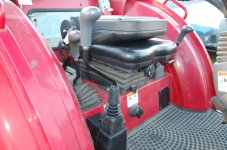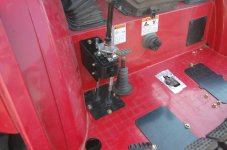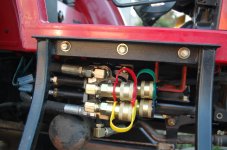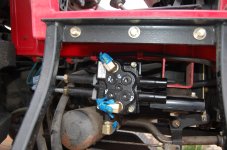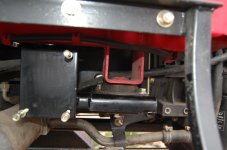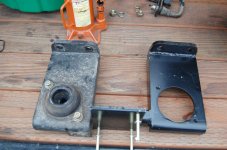Sysop
Elite Member
- Joined
- Jun 7, 2013
- Messages
- 3,311
- Location
- Fairmont, WV
- Tractor
- Mahindra 4035HST purchased 2013 - Husqvarna TS348-D purchased 2019 - Craftsman 42" HST purchased 2003
Another thing, even with the RPMs high it won't do two things at once if you max the control in either direction. Tractor hydraulics do not put out much more flow than what can flow through a wide open loader valve. Flowing everything through a fully opened function valve leaves no flow for the second function. The flow will always take the path of least resistance, cycling one set of cylinders to their max, then cycling the second set. To do two things at once you need to feather the controls lightly and find the balance of curl/dump/lift/lower that produces the desired result.
You'll also find the balance of these functions varies a lot depending on exactly which combination of functions you are trying to do and the current load being supported. Large loads raise slower and fall faster than no load. This changes "the path of least resistance"
The operator's goal should be to operate the machine slowly, smoothly, and without jerking it about, all while the RPMs are high enough to provide the rated hydraulic flow for the given machine. To do this requires a feathering of the controls. Someone who operates their loader or backhoe with low engine RPMs "because it is easier to control" needs to gain experience.
Most ratings for tractors are at PTO speed or are otherwise stated. I know of no pump that can provide the same flow at idle or high RPM, and I've seen no tractors where they indicate the hydraulic flow is rated at any more or less than PTO speed. So the "goal" RPM to operate at for optimum rated results and performance, are the PTO RPM. Getting things to operate well at PTO speed takes practice of the operator.
Keeping a pallet level while raising and lowering it is one of the more difficult things I've ever had to do with my tractor.
You'll also find the balance of these functions varies a lot depending on exactly which combination of functions you are trying to do and the current load being supported. Large loads raise slower and fall faster than no load. This changes "the path of least resistance"
The operator's goal should be to operate the machine slowly, smoothly, and without jerking it about, all while the RPMs are high enough to provide the rated hydraulic flow for the given machine. To do this requires a feathering of the controls. Someone who operates their loader or backhoe with low engine RPMs "because it is easier to control" needs to gain experience.
Most ratings for tractors are at PTO speed or are otherwise stated. I know of no pump that can provide the same flow at idle or high RPM, and I've seen no tractors where they indicate the hydraulic flow is rated at any more or less than PTO speed. So the "goal" RPM to operate at for optimum rated results and performance, are the PTO RPM. Getting things to operate well at PTO speed takes practice of the operator.
Keeping a pallet level while raising and lowering it is one of the more difficult things I've ever had to do with my tractor.
